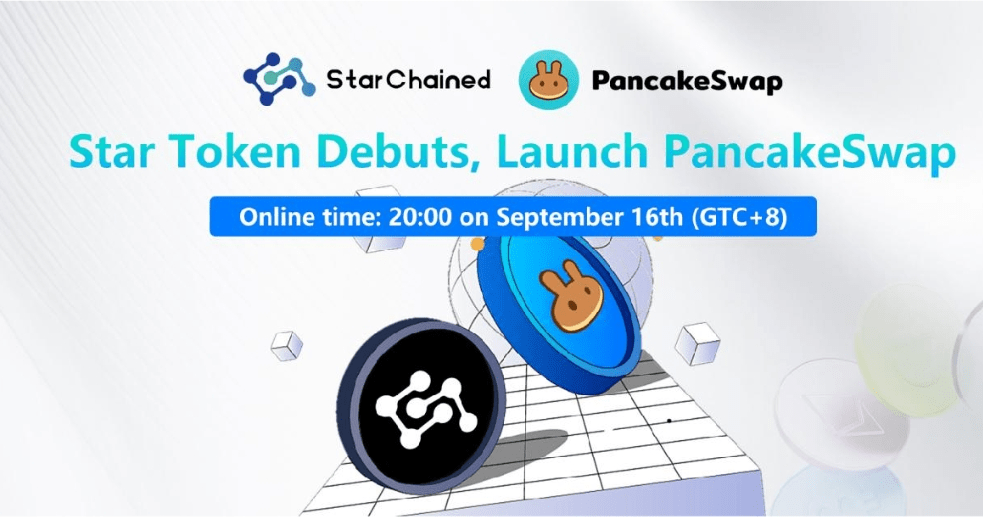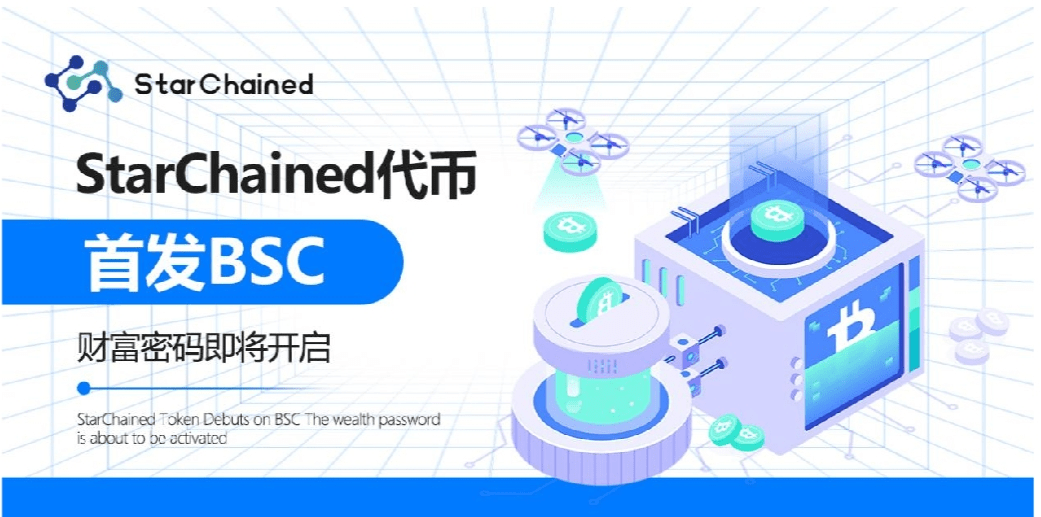Latest news: Decentralized modular cross-chain communication protocol StarChained: The governance token $Star will be first listed on PancakeSwap at 20:00 on September 16 (GTC+8)!

StarChained is a decentralized modular cross-chain communication protocol that can achieve fast, trustless cross-chain transmission of tokens, data, information, contract calls, etc. between different EVM networks and Rollups. The protocol aims to provide a holistic solution for multiple chains. Web3's HTTP is being built to form a communication layer across different blockchain networks, and the deployed DApp can interact with funds and data on multiple blockchain networks at the same time.
At the same time, StarChained is also a cross-chain infrastructure that can be used not only to develop cross-chain bridges, but also to build any cross-chain DApps such as cross-chain DEX, cross-chain lending, cross-chain NFT, etc. With its basic toolkit facilities, StarChained is able to establish a fast, secure, and trust-minimized bridge between blockchains and aggregations.
What makes StarChained’s cross-chain protocol different from other protocols?
First of all, StarChained cross-chain can cover a wide range, supporting the execution environments of multiple blockchain virtual machines such as Ethereum, Tron, BNB Chain, Solana, and integrating them to provide cross-chain options for many projects or DAPP ecosystems.
Secondly, StarChained is 100% open source, all codes are publicly available on GitHub, have undergone multiple audits and will be reviewed regularly to ensure security.
In addition, StarChained is different from the current multi-chain deployment applications such as Uniswap, Curve, and Aave. First, multi-chain applications such as Curve and Uniswap are equivalent to being deployed once on each chain. Secondly, even if it is the same application, each chain is independent, and assets and liquidity cannot be interoperable. For example, Curve on Polygon and Curve on Ethereum are two separately deployed applications, which are independent of each other and their assets are not interoperable.
Finally, StarChained's modular layout divides the main processes or functions involved in the cross-chain process into different components and develops corresponding APIs or SDKs and other tools. These components can be combined in various ways to achieve specific goals, and developers can integrate them according to their needs to solve the "impossible triangle" problem. Compared with other cross-chain interoperability methods, StarChained is unique.
StarChained is unique in three ways:
1. Low cost: The transfer is highly capital efficient, making StarChained the cheapest bridging infrastructure for users;
2. Trustless: The most secure protocol in the space, no trusted third party required;
3. Universality: StarChained can be deployed on any type of chain or L2 system and work in the same way.
StarChained security
For cross-chain facilities, how to ensure the security of asset and information transmission becomes the first task. According to the official description, StarChained's modular design architecture can not only improve the overall performance of cross-chain, but also inherit the security of the Ethereum mainnet.
In StarChained, asset cross-chain and information transmission layers are separated. StarChained's asset cross-chain is called the "Liquidity layer". This is an off-chain peer-to-peer network composed of a group of routers (nodes). The router is responsible for sending and receiving asset inventories on the chain. Users can transfer assets across chains through the router network. In essence, it is a state channel cross-chain, that is, a payment channel is established between each point and the native assets are transferred through the channel. The specific process is: the user locks the cross-chain asset on the source chain, and the router releases the asset to the user on the target chain after receiving the information and charges a certain fee.
In the information transmission layer, StarChained chose to cooperate with the cross-chain communication protocol Nomad and integrate related cross-chain functions, and named the network upgrade Amarok upgrade to support developers to build cross-chain applications. At the same time, StarChained's cross-chain mechanism uses Star Bridge, which means that the information received by the target chain is first assumed to be true and valid, and a third party (Watcher) automatically detects and supervises whether the transmitted data is correct. If a problem is found in the data, a challenge can be initiated, and the transaction can be rolled back on the source chain for verification, and the communication with the target chain can be disconnected. This mechanism is similar to Optimistic rollup. Finally, on the basis of integrating Nomad, StarChained temporarily added a layer of AMB (arbitrary message system) verification, integrating the official cross-chain bridge of each block network (such as the official Rollup bridge of Arbitrum-Ethereum, the official bridge of Polygon) as the last line of security, responsible for the cross-chain transmission of Tokens.

In return, $Star will be used to manage the ecosystem treasury of the StarChained network through DAO.
Currently, StarChained will expand the market through business forms such as equity pre-sale and on-chain pledge, and will gradually open cross-chain bridges of blockchain networks such as ETH-USDT, TRX-USDT, BSC-USDT, and SOL-USDT. The listing of $Star will officially open the cross-chain service of StarChained's decentralized modular cross-chain communication and lay the foundation for StarChained's unified cross-chain liquidity.